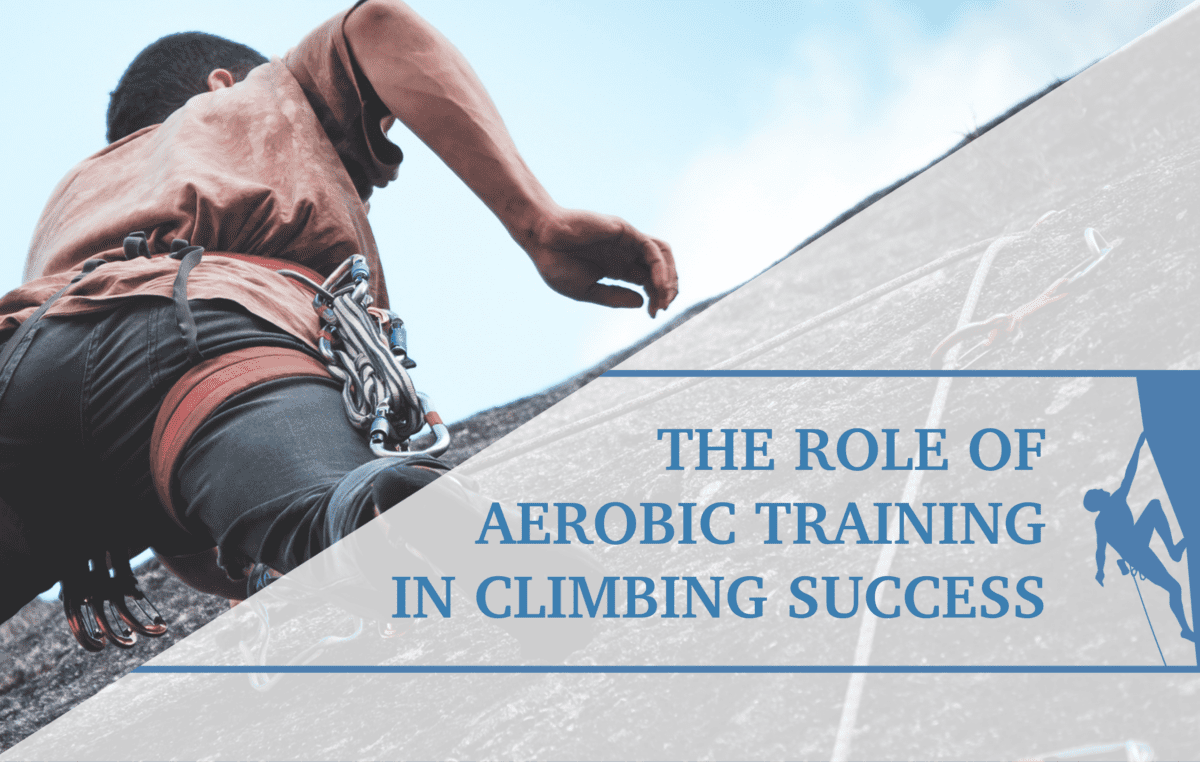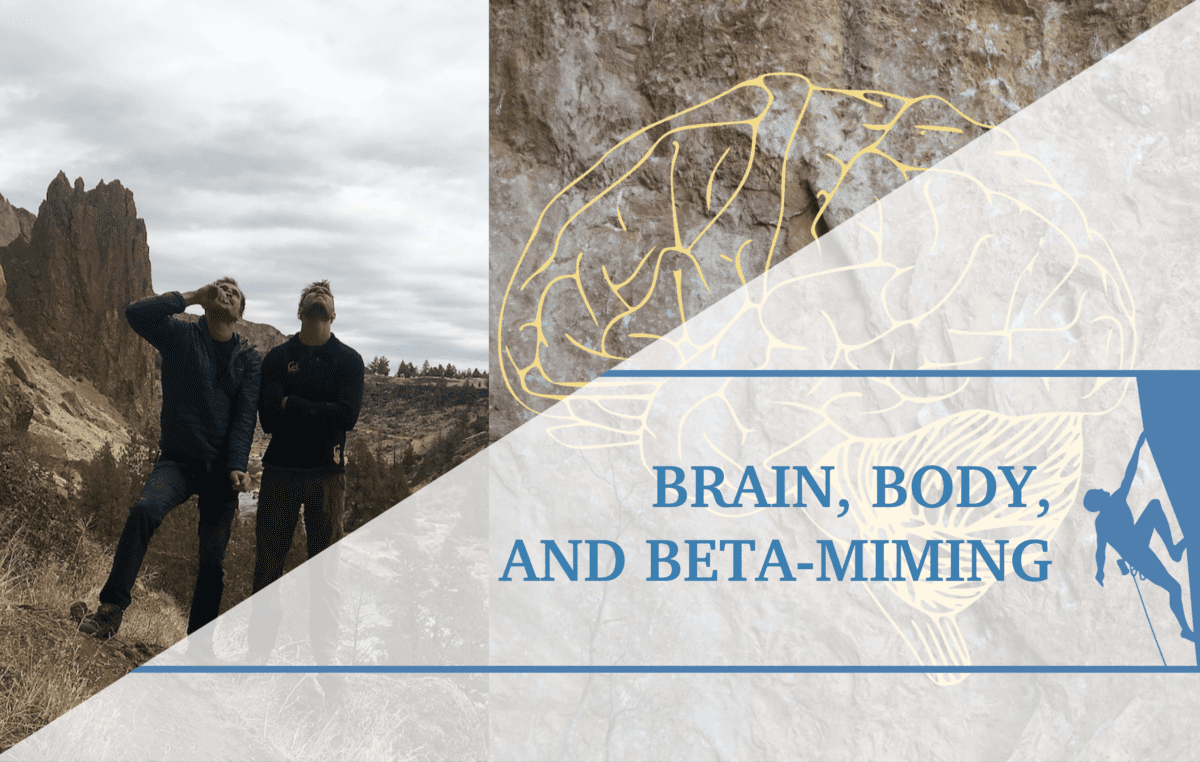Cardiovascular Training for Rock Climbers
You’re on a week-long climbing trip to Smith Rock State Park with your gym friends, psyched on trying to send your big project after a winter of good training in the gym. You climb hard for three days, almost sending the climb but stuck on the second to last move. Feeling your raw fingers that night, you decide to rest the following day and go for a run around the beautiful park. As you lace up your shoes the next morning, stoked to go get after some cross training on a sunny day, your friend comes out of the tent and asks what you’re doing, stating “climbers shouldn’t run!”. You laugh it off and head out for your run anyways, but ponder if your friend might be right. On the drive home from Smith Rock a few days later, you google “should climbers run?” and begin reading through article after article providing conflicting information.
The Pros
It is well known that supplemental cardio training improves overall fitness. But how much cardiorespiratory fitness do climbers really need? A study by Callender et al. in 2021 measured the cardiorespiratory demands of a simulated boulding competition in 11 elite climbers and found that bouldering has a substantial aerobic component. The athletes underwent a VO2max treadmill test a few days prior to the climbing test, and reached about 75% of their predetermined VO2max while bouldering. The authors also reported that there was minimal cardiorespiratory recovery within 1 minute after an attempted problem, and as bouldering requires successive high intensity efforts, substantial aerobic capacity may benefit bouldering athletes. What is the best type of cardio training for climbers – biking or running? Or some other form? Studies have shown that aerobic activity like running or cycling can improve blood flow not only to the legs, but also to the major arteries of the arms and forearms.As muscles in forearms swell while climbing, they trap blood and lactic acid, causing a feeling of pump. Thus, aerobic exercise that promotes better blood flow to the arms and forearms could theoretically reduce the pump from climbing long sport routes.
The Cons
In contrast, cardio training can take energy away from climbing workouts and impair recovery. Some research has shown that the increased blood flow to the arms and forearms from other aerobic activities such as running is minimal and likely insignificant when it comes to climbing performance. A research study by Fryer et al. in 2018 showed that aerobic treadwall testing VO2peak predicted sport performance while treadmill running VO2max did not. So, while sport climbing and bouldering may cause climbers to reach 75% of their VO2max, this may be more related to aerobic capacity of the forearms when using a treadwall as opposed to running. Specificity of training is a principle that states that the body will adapt best to the training that is most like the desired outcome. So, while cycling may increase overall fitness and indirectly make someone a better runner, the best way to train to be better at running is to run. The same principle applies to climbing – to increase endurance of the arms and forearms muscles, it is best to do aerobic training that is specific to these muscles.
Recommendations for Training
There are certainly research studies and anecdotal evidence from climbing coaches on both sides of the debate. Here are some general principles and guidelines for adding aerobic training into your weekly routines, if you choose.
- Timing is important. Do not run or cycle on the day before a high intensity climbing workout, or before a big day trying to send your project.
- It is important to have some days in the week dedicated to recovery. Just because you are taking a break from climbing one day and running does not make it a recovery day. You are still taxing your body’s energy systems and depleting glycogen, which is stored glucose used by the body for physical activity. Save at least a day or two throughout the week for a full rest day.
- Hard cardio does not enhance strength training. Run more in the off season, but dedicate more time to climbing 8-10 weeks before your climbing season starts.
Below are a few guidelines from prominent climbing coaches that they use with their athletes who ask about running for climbing performance4-6.
- Are you running because you enjoy it or because you think it will help your climbing? If you hate it, don’t do it.
- If your fitness is low and you want to climb long endurance routes, do more cardio. If you’re an ultra runner, do less cardio.
- If you’re fit enough to walk to the crag, then running is not going to help your performance.
In conclusion, if running or cycling is something you love, then continue to do it in moderation. Unless your baseline fitness is very low, running probably will not improve your climbing performance. Do more specific aerobic activities to train for climbing instead, like treadwall training. The ACSM guidelines for physical activity include moderate intensity physical activity of 150 minutes per week, and strength training at least 2x per week. So, if you are looking to improve your overall fitness and not solely focused on climbing, it is beneficial to get a mix of physical activity. And, if you still have questions about adding cardio training into your climbing training, talk to a doctor of physical therapy who specializes in working with rock climbers.
References
- Fryer SM, Giles D, Palomino IG, Puerta A, Espana-Romero V. Hemodynamic and cardiorespiratory contributors to sport climbing performance. Journal of Strength and Conditioning Research. 2018 Dec; 32(12):3534-3541.
- Callender NA, Hayes TN, Tiller NB. Cardiorespiratory demands of competitive rock climbing. Appl Physiol Nutr Metab. 2021 Feb; 46:161-168
- Padilla J, Simmons GH, Bender SB, Arce-Esquivel, AA, Whyte, JJ, Laughlin MH. Vascular effects of exercise: Endothelial adaptations beyond active muscle beds. Physiology, 2011 June; 26(3):132-145.
- Ishii S. Cardio for climbing – is it worth it? Training Beta. https://www.trainingbeta.com /cardio-for-climbing-is-it-worth-it/
- Pincus M, Quinn N. TBP 185: Running for climbing fitness: Does it work? And how to avoid common mistakes. 2021 Nov 12. https://www.trainingbeta.com/media/ matt-running/
- Gresham N, Quinn N. TPB 048: Neil Gresham on Training for 5.11 and 5.12. 2016 March 14. https://www.trainingbeta.com/neil-gresham-on-cardio-for-climbing/
About the Author

Dr. Shawna Troupe, PT, DPT is a physical therapist based out of Jackson, Wyoming at Four Pines Physical Therapy. Shawna was born and raised in Washington and grew up playing soccer, running track, and loving all things outdoors. She competed in Track and Field and Cross Country for Western Washington University in Bellingham for four years while completing her BS in Kinesiology and minor in Sport Psychology. After taking a few years off school, living in Australia and Spain and traveling around the world she completed her doctorate in Physical Therapy at Eastern Washington University. When not at work Shawna enjoys trail running, competing in mountain races and ultra marathons, mountaineering, rock climbing, and skiing as well as hiking with her dog Jasper. She has taken continuing education for treating rock climbers and would love to help you get back to sending your projects!
- Disclaimer – The content here is designed for information & education purposes only and the content is not intended for medical advice.




